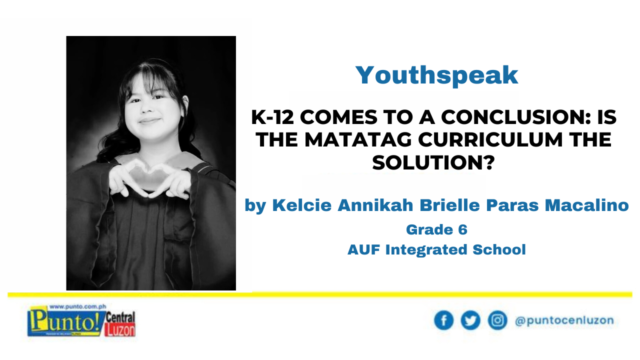For twelve (12) years, the Philippines was under K-12, a curriculum in which high school was until twelfth grade, more commonly known as senior high school, which also mainly focused on enhancing the Intelligence Quotient (IQ) and knowledgeable skills of a student. But the Department of Education (DepEd) has decided that it’s time for a change of curriculum, also known as the Matatag Curriculum. But is this curriculum the solution for a better quality education?
The K-12 curriculum mainly focused on building a strong foundation in which a student can acquire knowledge and skills on crucial subjects, making high-quality education accessible to all, and helping students master analytical skills. It also helps students become smart, savvy, and educated people with an advanced intellectual development. This is the reason why it added two extra years of high school making the eleventh and twelfth grades.
All that being said, though the K-12 curriculum is good, there are some bad sides to it as it does not entirely focus on a student’s behavior and discipline, poor reading and literacy, and it doesn’t focus on the mental, physical, and emotional health of the students. The Philippines’ schools have many smart and remarkable students, although a problem shared throughout these schools are attitude issues. Many students may have strong, logical minds but their bad behavior was being ignored, which makes most students believe that it’s okay to be rude as long as you’re smart. The Matatag curriculum on the other hand, focuses on discipline, behavior, and Emotional Quotient (EQ). It helps a student think before they act, be kinder to others, and overall develop their minds to be more sensitive.
The Matatag curriculum focuses on social and religious values, making a student well-mannered, mature, and socially aware of themselves. It will help students master literacy and numeracy. Mastering literacy will help their speaking, reading, writing, and grammar whilst mastering numeracy will help them think fast, and make decisions in a variety of situations. These cannot only improve their future but also their present, helping them think on their feet and become confident.
In conclusion, the Matatag curriculum fosters a supportive environment akin to a second home, surpassing the K-12 model. It cultivates learning in a positive setting where students feel safe expressing themselves. Neglecting attitude issues in schools only exacerbates the problem, emphasizing the importance of students feeling welcomed and secure throughout their educational journey. With all of the above being considered, is K-12 still the better curriculum?





